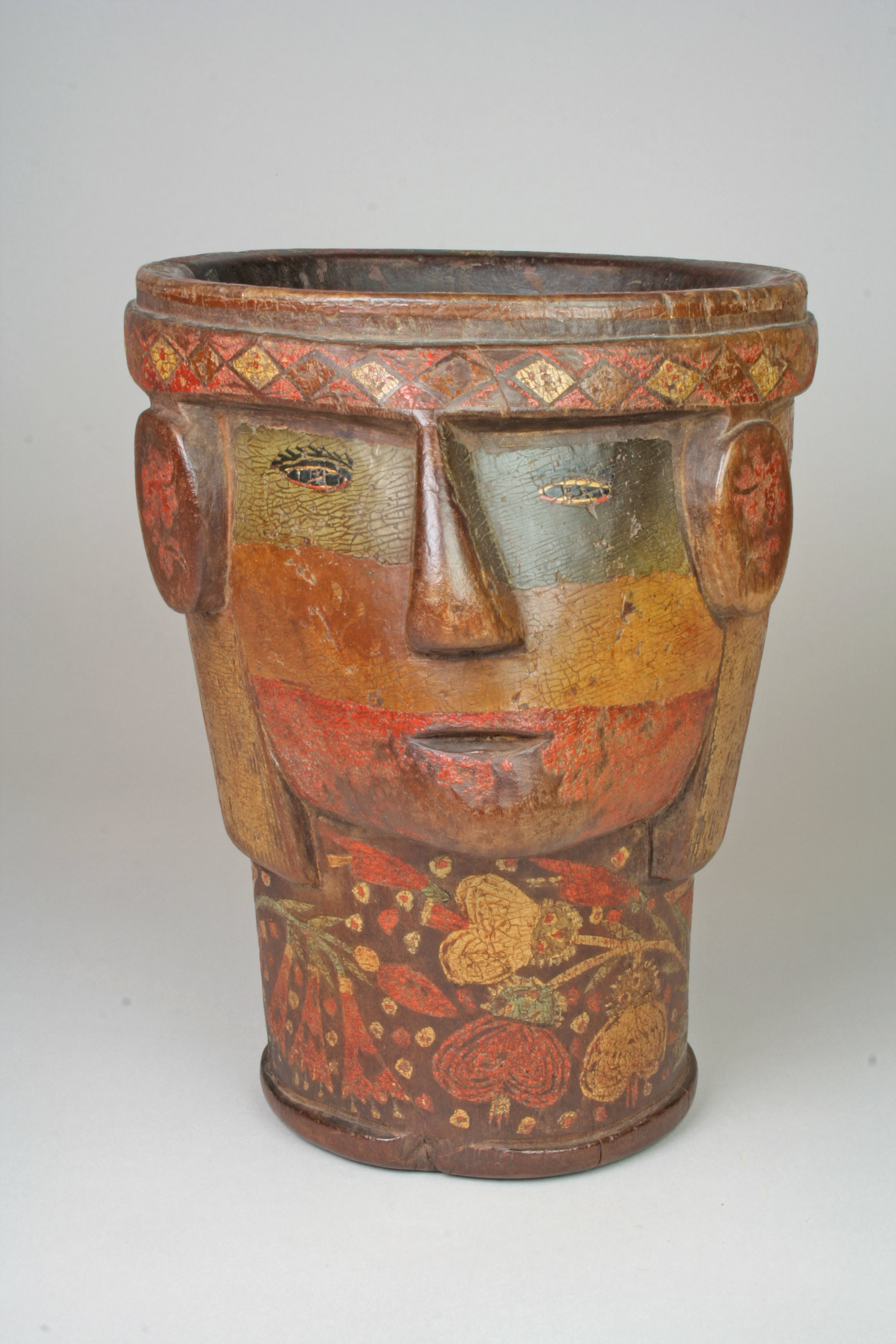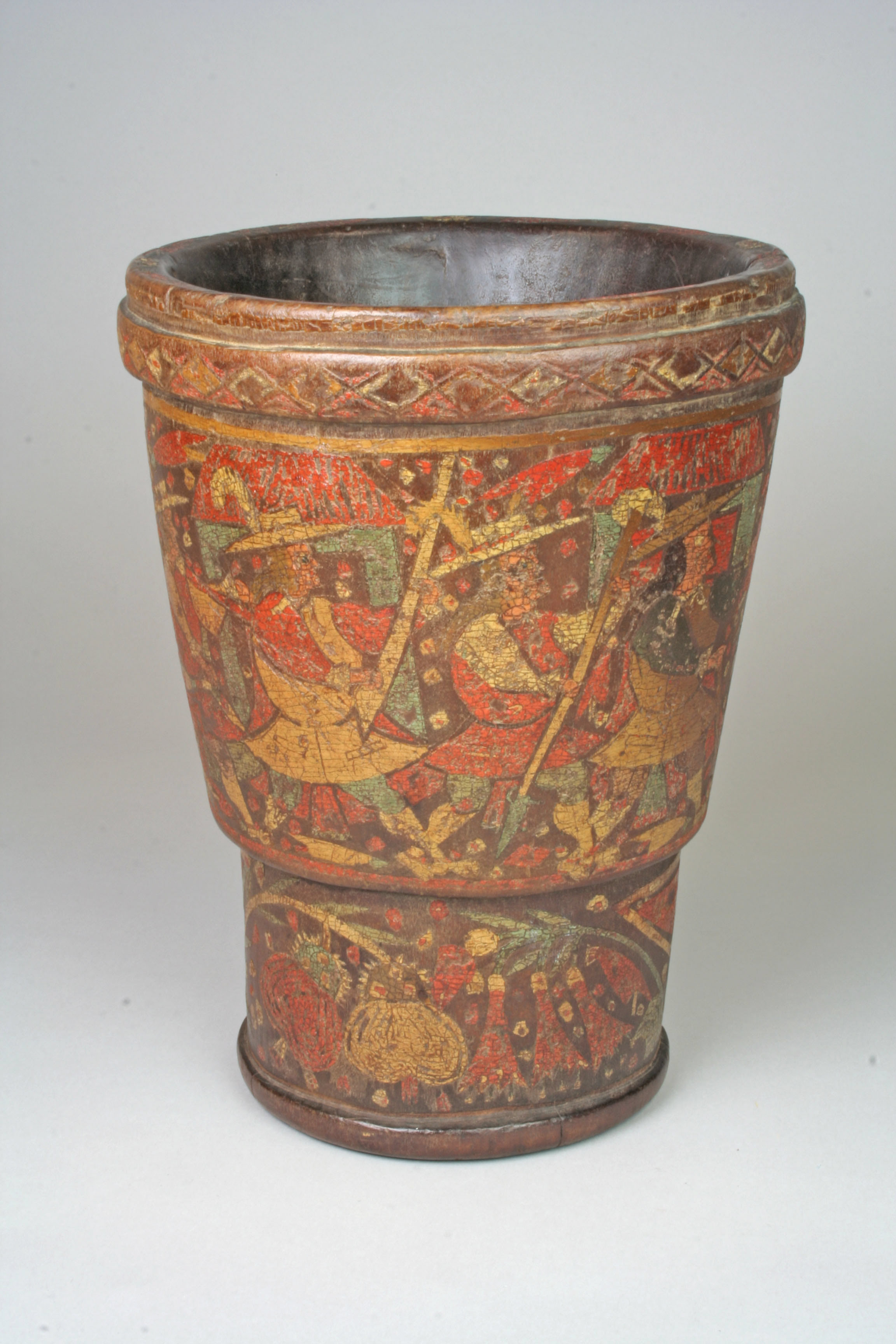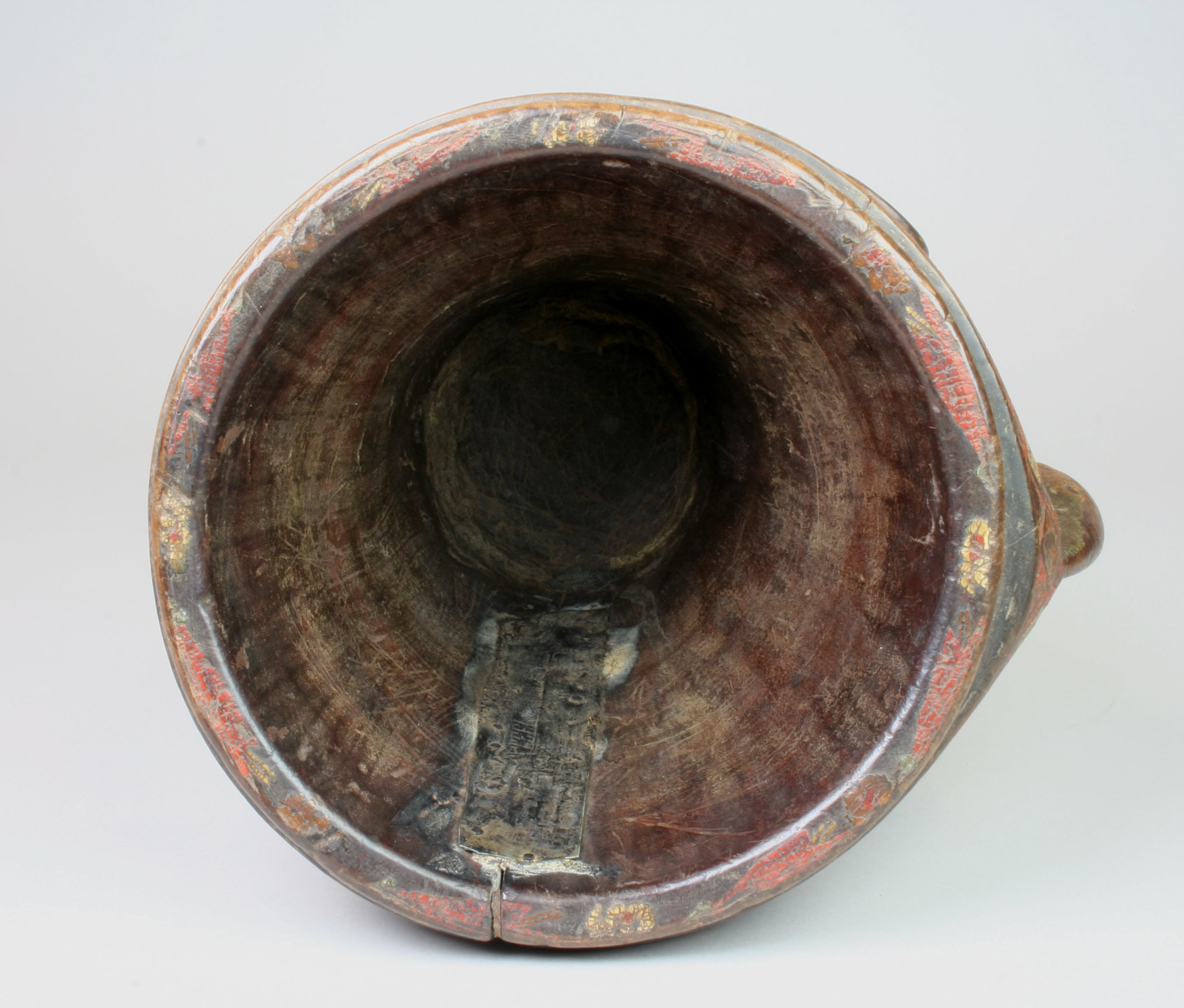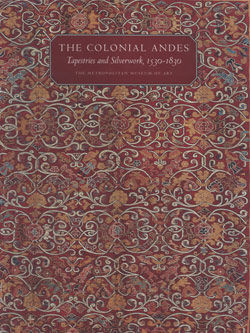Kero
Not on view
The painted faces on keros of this type indicate that they are meant to represent the forest-dwelling Anti. The eastern slopes of the Andes, descending to the tropical forest of the great river basins, were populated by this ethnically separate group, also called Chunchos and considered savages by the inhabitants of the Incan Eempire in the high plateaus and the Pacific coast.
Despite their resemblance to face beakers of the Precoluombian era, keros shaped in the form of human heads are widely believed to have evolved in a later colonial phase; the "free-style" images that frequently wrap around the backs come far closer to European narrative form in their arrangement than do the rigid depictions of humans on early colonial keros. Here the scene on the back depicts a procession of several figures in Spanish attire: two attendants follow an official who is preceded by two small musicians (one above the other) playing a trumpet and drum.
The overall message, however, is still conveyed in terms of the dichotomous Inca worldview of balanced opposites: imperial order (the narrative processional scene) counters the forces of disorder (the Anti, implicit in the vessel's shape).
Due to rights restrictions, this image cannot be enlarged, viewed at full screen, or downloaded.
This artwork is meant to be viewed from right to left. Scroll left to view more.









